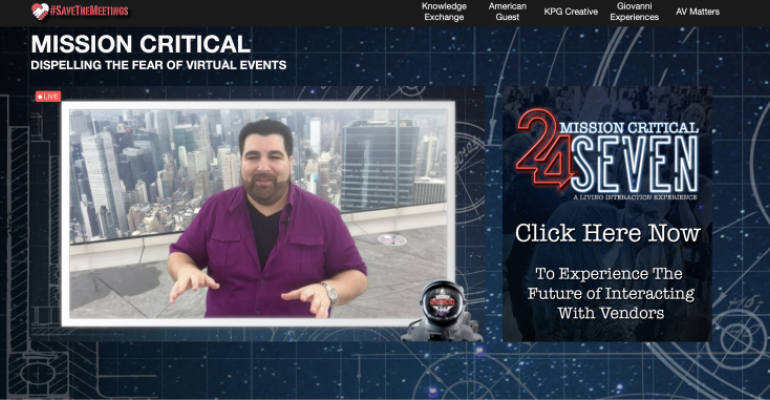During the second installment of Mission: Critical, a monthly webcast by The Knowledge Exchange that features meeting planners from different industries addressing the new business-events landscape, three prominent planners weighed in on when their organizations are likely to resume in-person events.
Their consensus: Small events by mid-2021, and larger events by the end of 2021.
To start, the planners outlined how their departments have adapted to the online medium. “Virtual events were a trend before the pandemic; it simply pushed the medium to the forefront,” said Suzanne Shaw, executive director, university conferences and events for Yale University. “It affords a more accessible and more affordable reach for many events, so I feel like there is a silver lining we all can take from this. Event planners are solution advisors, and we must be able to offer creative solutions for people’s needs, plain and simple.”
Nicola Kastner, vice president, global head of event marketing strategy for software firm SAP, added that “we thought it was going to be a shorter-term situation, but the reality is dawning on all of us that working primarily in the digital world is going to last longer than we thought. We’ve had about 1,000 of our in-person events cancel across 2020 and we have moved many of them online, and the amount of people you can engage globally is substantial. Now that the genie has been let out of the bottle, we are certainly going to embrace it more over the long term.”
For SAP’s largest event—Sapphire Now, held each May in Orlando for 26,000 of its customers—“we reimagined it as a global broadcast with different channels for different countries, with sophisticated programming and delivery in different languages. And we got 129,000 registrations—five times our typical audience.”
There was, however, a significant technological glitch: “The entire system went down just as our CEO was going live for his keynote,” Kastner recalled. “It was terrible for a few reasons, not the least of which was the amount of hard work that went into it among our team. Things worked out okay in the end; we acted fast and were able to stream the keynote to everyone later in the day.”
 Janae Henderson, director and head, conference and event marketing U.S. for RBC Capital Markets, told the online audience of planners that “we’ve embraced the situation by first acknowledging that we are not in control of all the things we used to be. All we can do is take a breath and understand that things are going to happen the way they are going to happen. Then we can understand all the intricacies and absorb the new skill sets of the virtual medium—know what the technology has to offer.”
Janae Henderson, director and head, conference and event marketing U.S. for RBC Capital Markets, told the online audience of planners that “we’ve embraced the situation by first acknowledging that we are not in control of all the things we used to be. All we can do is take a breath and understand that things are going to happen the way they are going to happen. Then we can understand all the intricacies and absorb the new skill sets of the virtual medium—know what the technology has to offer.”
“The one thing we are doing that is consistent, no matter the medium, is putting the client experience first and ensuring that is always top of mind as we do our work,” Henderson added. “Event planners tend to get into a mode where we are so focused on just doing what we do, but this situation has shown that we can be very resilient and that events will always be necessary. So right now we are just trying to raise the bar on our technological prowess.”
The final question of the webcast was this: When do you see your organization conducting its first live events—even 50 or 100 people—at a traditional meeting venue? “The earliest would be the spring of 2021,” said Shaw from Yale.
“Maybe in spring 2021 but definitely small,” said Kastner from SAP. “For the first half of the year, we are probably going to be virtual but perhaps with some small local in-person components to an event. But we can’t expect that many people will want to travel. In the second half of the year, maybe we can get into bigger events comfortably.”
And Henderson from RBC said that “maybe we can do smaller events in the spring and summer of 2021, local ones. But if you have to wear a mask and do socially distancing, then we need to evaluate if the event must be in person because those things take away from the networking and the other reasons that people get together.”





